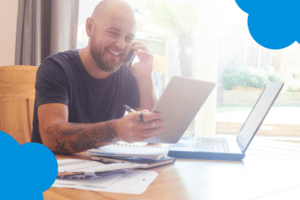Honan flags cyber, property as challenging lines for insureds

Cyber and property lines will remain challenging, as the Optus data security breach and NSW/Queensland floods fallouts continue to strain risk appetite in the two product classes, according to broker Honan’s latest quarterly update.
The update, released today, also touched on the overall state of the insurance market and possible impacts stemming from an economic slowdown.
“Australia is experiencing increasing interest rates, a slowing economy, and a hard employment market,” COO Honan Insurance Laurence Basell said.
“Many of these economic headwinds continue to impact the insurance market too, flowing through to businesses and consumers.”
The Honan update says financial lines conditions have eased, the result of actions taken by insurers to improve loss ratios especially in professional indemnity (PI) and directors’ and officers’ (D&O) classes in the last few years.
“We have witnessed a deceleration of PI & D&O rate increases due to new market entrants and corrective portfolio measures, with rates now closer to flat and the potential for decreases on excess layers,” Honan says.
“Insurers are typically comfortable with current capacity and limit attachment points, and they are more open to removing coverage restrictions applied during the hard market.”
But the same can’t be said for cyber, according to the update.
“Cyber is the exception to these trends, with the intensifying hardening market conditions over the last three quarters expected to continue through 2022,” Honan says.
Honan says major markets have reduced their maximum lines from $10 million to $5 million in many cases.
At the same time rates for corporate risks have increased up to 80% with insurers focusing heavily on ransomware controls and the quality of vendor support services before providing cover.
“The recent Optus cyber-attack is a wake-up call for all companies in Australia,” Honan says.
“While the incident is still unfolding, it is clearly significant and has the potential to be the largest attack in Australia with up to 9.8 million customer records compromised.”
The outlook for property is just as grim for insureds as the industry continues to count the cost of the NSW/Queensland catastrophe, the most expensive insured flood event with losses of at least $5.45 billion.
Honan says it expects insurers to continue monitoring claims risk factors such as floods and fires in high-risk geographies and apply rate corrections appropriate to the level of risk.
Domestic property insurances will continue to attract premium increases until labour and material costs and availability stabilise.
“Premiums for high-risk property and liability coverage continue to climb, driven by recent catastrophic weather events such as the flooding across south-east Queensland and northern NSW,” Honan says.
“We have also seen a reduction in the limits and coverage available for Australian businesses. Unfortunately, Lloyd’s of London expects the pressures on pricing and capacity to continue as insurers seek to maintain acceptable loss ratios.”




